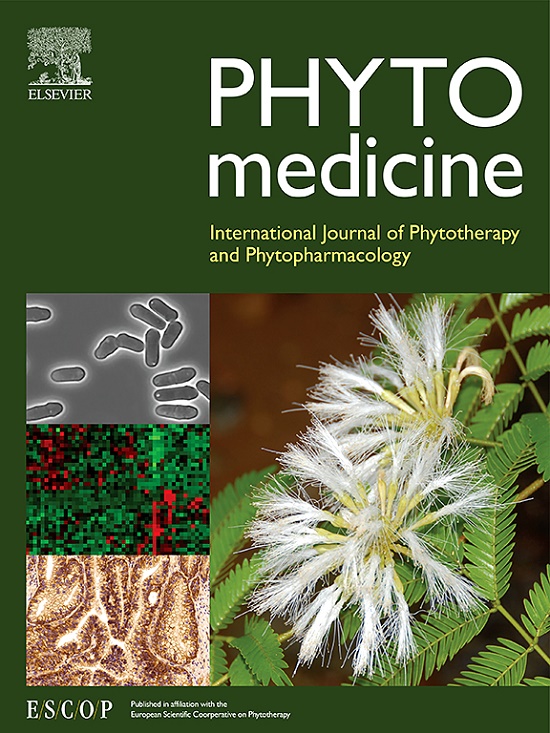Exploring the therapeutic potential of HAPC in COVID-19-induced acute lung injury
IF 6.7
1区 医学
Q1 CHEMISTRY, MEDICINAL
引用次数: 0
Abstract
Background
Acute lung injury (ALI) is one of the critical complications of coronavirus disease 2019 (COVID-19), which significantly impacts the survival of patients.
Purpose
In this study, we screened COVID-19-related target genes and identified and optimized potential drugs targeting these genes for the treatment of COVID-19.
Study design
In this study, bioinformatic analyses were conducted and subsequently identified and optimized potential drugs targeting these genes for the treatment of COVID-19 were carried out.
Methods
Firstly, we analyzed the targets gene in patients with COVID-19 using single-cell data analysis. We performed structural modifications on Chicoric acid (CA) and combined it with hyaluronic acid to enhance the targeted activity towards Cluster of differentiation 44 (CD44). Poly (sodium-p styrenesulfonate) (PSS) was used to form a PSS-coated CA+hyaluronic acid nanocomplex (HA-P). Subsequently, Lactobacillus murinus conidia cell wall (CW) was encapsulated to prepare PSS-coated CA + hyaluronic acid + Lactobacillus murinus conidia cell wall (HAPC) nanocomplexes.
Results
The expression of APPL1 expression in macrophage of COVID-19 patients was up-regulation. CA was found to bind to the APPL1 protein and inhibit its ubiquitination. HAPC effectively targeted ALI through the highly efficient interaction between CD44 and Hyaluronic acid (HA). HAPC alleviated the symptoms of ALI and restored epithelial function in mice with ALI. HAPC induced the Adaptor protein containing a pH domain, PTB domain and leucine zipper motif 1 (APPL1)/ liver kinase B1 (LKB1)/ AMP-activated protein kinase (AMPK) pathway by inactivating the NOD - like receptor protein 3 (NLRP3) pathway in ALI. CA interacted with the APPL1 protein and prevented its ubiquitination. HAPC facilitated the interaction between APPL1 and LKB1 to induce the AMPK/NLRP3 pathway. It promoted the formation of LKB1 at GLU-67, ARG-72, ARG-314, ASP-316, and GLN-312 and APPL1 at ARG-106, ASP-115, LYS-124, ASN-119, and GLU-120.
Conclusion
Altogether, HAPC nanocomplexes exerted anti-inflammatory effects on ALI by promoting the interaction between APPL1 and LKB1 to induce the AMPK/NLRP3 pathway, and may be one new therapeutic strategie for ALI.

求助全文
约1分钟内获得全文
求助全文
来源期刊

Phytomedicine
医学-药学
CiteScore
10.30
自引率
5.10%
发文量
670
审稿时长
91 days
期刊介绍:
Phytomedicine is a therapy-oriented journal that publishes innovative studies on the efficacy, safety, quality, and mechanisms of action of specified plant extracts, phytopharmaceuticals, and their isolated constituents. This includes clinical, pharmacological, pharmacokinetic, and toxicological studies of herbal medicinal products, preparations, and purified compounds with defined and consistent quality, ensuring reproducible pharmacological activity. Founded in 1994, Phytomedicine aims to focus and stimulate research in this field and establish internationally accepted scientific standards for pharmacological studies, proof of clinical efficacy, and safety of phytomedicines.
 求助内容:
求助内容: 应助结果提醒方式:
应助结果提醒方式:


